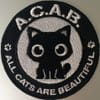A Conversation with Christina Sharpe, Rinaldo Walcott and Saidiya Hartman
Diversity of Aesthetics, Vol 3
I was incredibly honored when Jose Rosales and Andreas Petrossiants asked me to moderate the third volume in their Diversity of Aesthetics book project, on the topic of looting. As they wtote describing the series, it’s “a multi-volume editorial project started amongst comrades. It takes shape through a series of conversations between artists, militants, organizers, precarious workers, publishers, writers, educators, and others.” I was absolutely bowled over when Christina Sharpe, Rinaldo Walcott and Saidiya Hartman agreed to join me for this roundtable on looting. It was frankly a dream just hearing these three brilliant people talk to one another about these questions, let alone to get to ask them! The pamphlet is in final editorial stages now, and will be available for purchase early next year.
But I wanted to share the intro I’ve written with y’all to give you a little teaser, and because this will be a limited print run and print copies may be in quite short supply, so stay tuned, I will let y’all know as soon as they go on sale. The dialogue will be available online.
If you haven’t read them yet, snatch up Volume 1 and Volume 2 here.
The following conversation with Christina Sharpe, Rinaldo Walcott, and Saidiya Hartman was held in fall of 2022, two years after the fires of the George Floyd Rebellion had faded. It took place in a period of long reactionary retrenchment and ennui, driven by exacerbation and denial of the coronavirus pandemic and fascist attacks on reproductive health and queer life. The forgetting of the uprising has been a crucial part of this reaction, and is an active and ongoing process.
It is in the interests of white supremacy to claim that rioting and looting are not communicative acts, but are instead pure “criminality,” an unleashing of the monstrous Id of that state of nature lurking behind the everyday. This is what fascists and the police endeavor to prove when they themselves riot, wantonly killing and destroying in a frenzy of hatred. Framed this way, riots, especially those in response to police violence, justify the “Thin Blue Line” in all its obscenity and overreach: it’s the pigs or the mob.
But the sustained erasure and rejection of anti-police and black-led rioting and looting—by the state, the academy, the media, corporations, as well as many leftist and socialist groups—only indicates just how much ideological work it takes to repress the message of the riot.
The riot refuses to “speak truth to power,” it refuses to address capital and its nation-states, and so the politicians claim it is total obscenity, pure nonsense. But this refusal and destruction of their language is precisely the content of its most central act: looting.
Looting is a direct action par excellence, improving the lives of those who participate in it while attacking their enemies and exploiters.
But it is also a nearly irrecuperable aesthetic gesture against the police, whiteness, and the regime of property that gives those forces power and purpose. In revealing the innately ideological and social content of property ownership, in demonstrating that all that stands between us and plenty is a thin sheet of plate glass, looting destabilizes the ideological hold of whiteness, property, and capital, and it has done so since the enslaved looted themselves singly and en masse from the plantation.
This conversation is an act of remembering these gestures, an attempt to clear away some of the ashes and dirt thrown by generations of reactionaries so that the embers of liberation might once again catch tinder and alight.
So looking forward to sharing the entire conversation with y’all!
